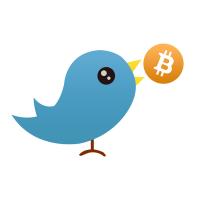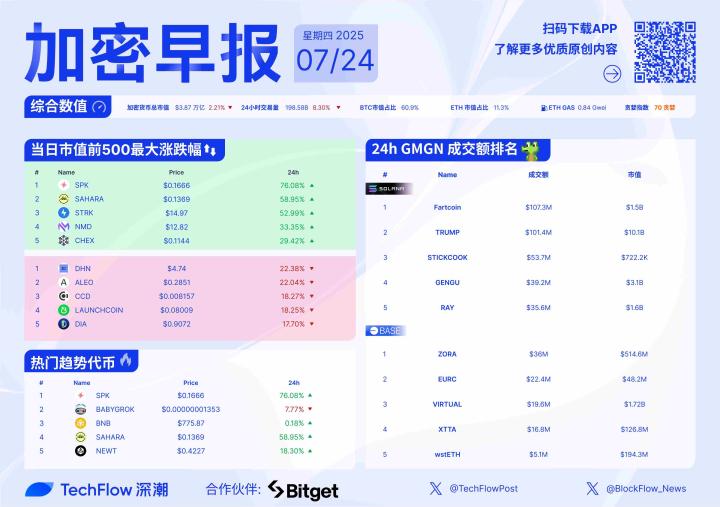Author: Matt Levine
Source: Bloomberg
Translated and Compiled by: Odaily
Original Title: Bloomberg's Chief Financial Writer: When Every Company Wants a Bitcoin Treasury
The basic logic is as follows: The US stock market is willing to pay $2 for every $1 of cryptocurrency. If you have a large amount of cryptocurrency, the best approach is to merge with a small US listed company, which would double the value of your cryptocurrency.
First, if you own a large amount of cryptocurrency, you definitely need a listed company, so providing listed company shell resources to cryptocurrency investors has become a good business (especially for small listed companies with few existing businesses, allowing them to easily transform into pure cryptocurrency holding platforms). For example, if you have $100 million in Bitcoin, merging with a listed company can make it worth $200 million, so even if the listed company has no value other than its listing status, you would be willing to pay its shareholders $40 million.
Second, if you own a large amount of cryptocurrency, never sell to cryptocurrency buyers, but sell to the stock market instead. Suppose you have 1,000 Bitcoins, which would only fetch $118 million in the cryptocurrency market, but if packaged as a cryptocurrency treasury company and listed, it could be worth $236 million.
Regarding the first point, we often discuss cases of small listed companies being acquired by cryptocurrency entrepreneurs and transformed into cryptocurrency treasury companies. But this approach is both inefficient and arbitrary: If you want to list a cryptocurrency on a securities exchange, why must you find a failed listed biotech company, negotiate with its executives, finalize the deal, and then fire those biotech researchers? Why don't investment banks directly provide ready-made listed shell resources, so you don't have to transform biotech/toy/liquor companies into cryptocurrency companies, but can start from scratch?
Of course, banks are indeed doing this business. This business—providing publicly listed shell companies—is the SPAC (Special Purpose Acquisition Company) business. Cantor Fitzgerald LP (whose CEO was once the US Secretary of Commerce) specializes in this business: doing both regular SPAC fundraising and specialized business of SPAC mergers with Bitcoin pools. We mentioned Cantor Equity Partners Inc. in April. This is a SPAC under Cantor that announced an agreement with Bitfinex/Tether and SoftBank to package their Bitcoin into a listed company. The company will be named Twenty One Capital Inc, and this SPAC currently trades at about a 200% premium relative to its Bitcoin value. This transaction is very profitable for Tether and SoftBank. It is also profitable for Cantor, the SPAC initiator, which will receive substantial returns from this transaction.
[The rest of the translation follows the same professional and accurate approach, maintaining the original structure and meaning while translating to English.]Twenty One has a similar "currency" (its own shares). You can imagine a transaction where Twenty One acquires Blockstream's Bitcoin with its stock. But how would the price be determined? The core of the Bitcoin treasury business model is that Twenty One can issue stocks at a premium, using the raised funds to buy Bitcoin, thereby increasing the Bitcoin holdings per share. But this is also the core of Blockstream's model. Blockstream wants to obtain a premium for its Bitcoin holdings, but Twenty One is unwilling to pay a premium to acquire more Bitcoin. (It hopes to "strategically allocate capital to increase Bitcoin holdings per share.") Transferring Bitcoin to the open market can create enormous value, and holders of each Bitcoin fund want to capture this value for themselves.
In the long run, is this model sustainable? If every Bitcoin whale can make more money by establishing their own Bitcoin treasury company, how will existing Bitcoin treasury companies continue to acquire more Bitcoin? Of course, there are also small investors; if you only have 0.1 Bitcoin, you won't go public specifically for this, so you'll sell to MicroStrategy, Twenty One, BSTR, or other companies. I think ultimately there will be stock-for-stock mergers between Bitcoin treasury companies. Companies with lower premiums will be acquired by those with higher premiums. I'm looking forward to seeing the fairness opinions for these transactions.
Anyway, so far, BSTR's transaction seems less than ideal: Around noon today, the SPAC stock was trading at about $13.93 per share, which means BSTR's Bitcoin reserves have only about a 39% premium, far below the 100%+ premium I usually expect. Perhaps the market for such transactions is finally becoming saturated?
Meme Coin Market: Don't Ask, Just Say You Didn't Get the "Vibe"
In traditional financial structure design, if you work at a bank and a customer says "I want a tradable instrument X that reflects the price of another thing Y," you have to carefully consider how to link X and Y. Perhaps you'd think of designing an arbitrage mechanism that allows Y holders to exchange it for X, thereby keeping X and Y's prices synchronized. Maybe you could construct a basket of Y, and X would be a tradable ownership share of this basket. Maybe you could call three banks daily to inquire about Y's quotation, then take the average as X's daily settlement price. Perhaps X's settlement price could be derived from the historical level of an non-tradable index of Y. The specific plan varies by situation, but generally, it's a challenging problem. Like "I want a tradable tool reflecting US house prices": Sure, that's a good idea, we all want it, but which houses exactly? How do you ensure this tool accurately reflects house prices?
Then the cryptocurrency field discovered a truly great financial innovation: you can completely ignore those complex designs and rely purely on "vibe". You announce "I'm launching a new token HomePriceToken, which will reflect US house prices." Then a traditional finance practitioner like me would ask "Wait, how does it reflect house prices?" You'd answer "It just reflects, isn't it written in the name, this is HomePriceToken, what's the problem?" I'd continue asking "What's the arbitrage mechanism—" you'd say "Stop talking, this is HomePriceToken."
This discovery is usually called "Meme coin", which I often joke about, but it's indeed an interesting conceptual innovation. The core idea of Meme coins is: (1) It has a name that associates it with something fundamental, (2) Its trading price is related to the fundamental thing, not because of any arbitrage mechanism, but just because of the name. When people think more about Doge, Dogecoin's price rises, just like that.
This discovery is interesting because it opens the door to financialization for things that typically have no price at all. House value is still somewhat traceable—though there are complex issues of liquidity and aggregation—but Meme coins aren't limited to traditional assets. Meme coins could reflect summer's hit song, an actor's popularity, the health of the US democratic system. Not in a prediction market way—not settled based on external facts—but just in the Meme coin world. If the democracy coin rises, democracy is doing well, and vice versa, don't ask why.
I'm not saying it's not absurd, it is indeed absurd, but it's an interesting absurdity. Here's Taylor Lorenz's report on Gen Z's Meme coin slang:
Every day, 20-year-old college student Boeshi scrolls social media, searching for new words and phrases. He tracks the usage of huzz, soyboy, baddie, mewing, not just to chat with friends, but to invest and make money.
As new Gen Z and Alpha generation slang continues to go viral, a complete financial ecosystem is secretly taking shape. Young people are investing real money in Meme coins linked to popular phrases, hoping to profit from these words' popularity.
"These brain-dead terms, the more they're used, the higher the coin price," Boeshi said. "The more viral the word, the more viral the coin."
"Is there an arbitrage mechanism between vocabulary usage and coin price," I interjected, but then my brain completely froze, and Boeshi happily ignored my question.
In this emerging attention economy, viral spread equals monetary value. If a word is trending, the corresponding coin will surge. When the heat fades, the price drops. "When a word starts trending, you'll find it correlates with Google search peaks," Boeshi said. "Then the decline also correlates with the coin's historical trend." Currently, several dozen slang Meme coins can be traded on alternative crypto site Pump.fun.
Okay, fine. Huzz. Rizz. Skibidi. Also, here's the complete research paper on Meme coin manipulation by Alberto Maria Mongardini and Alessandro Mei:
Unlike utility-focused crypto assets like Bitcoin or Ethereum, Meme coins' value primarily comes from community sentiment, making them susceptible to manipulation. This study conducted a cross-chain analysis of the Meme coin ecosystem, examining 34,988 tokens on Ethereum, BNB Smart Chain, Solana, and Base. We described the token economics characteristics of Meme coins and tracked their growth through a three-month longitudinal analysis. We found that among high-yield tokens (>100%), a shocking 82.6% showed evidence of extensive use of artificial growth strategies designed to create a false impression of market interest. These methods include wash trading and what we define as Liquidity Pool-based Price Inflation (LPI), which triggers dramatic price increases through small strategic purchases. We also found evidence of schemes aimed at harming investor interests for personal gain, such as pump and dump. Notably, most tokens involved had previously experienced wash trading or LPI, suggesting that early manipulation often paves the way for subsequent exploitation. These findings reveal the prevalence of manipulation in high-performing Meme coins and imply that their dramatic rises are more likely from coordinated human manipulation than natural market dynamics.
Imagine launching one of those 17.4% of Meme coins that weren't manipulated. It looks truly lazy.






